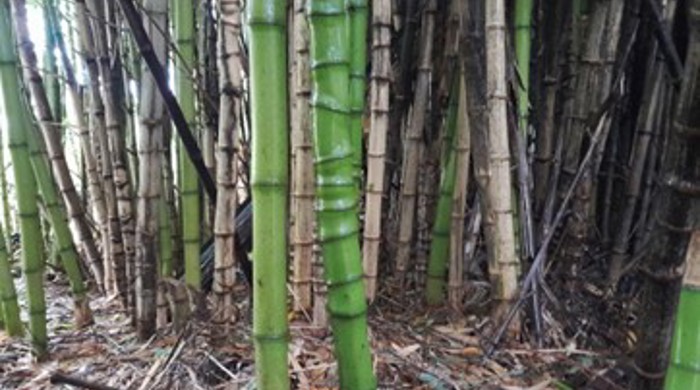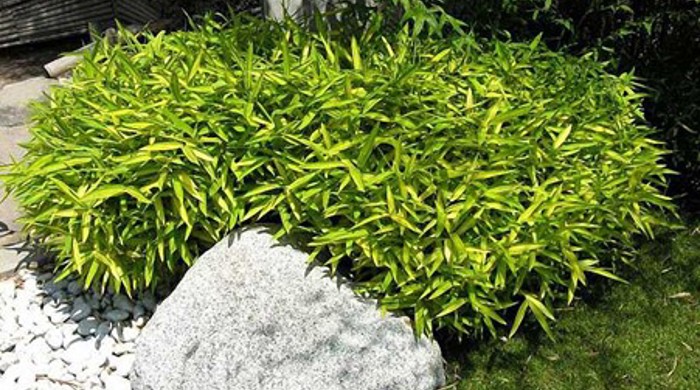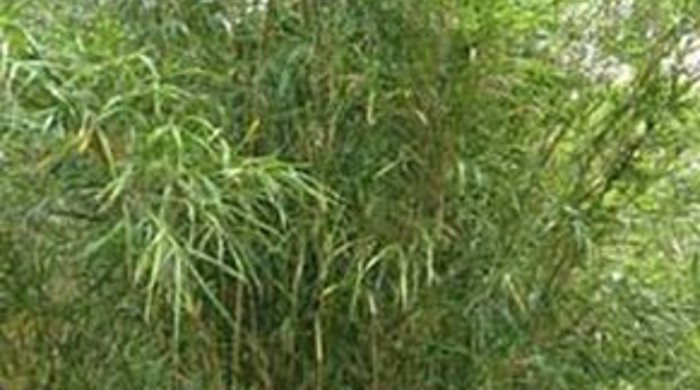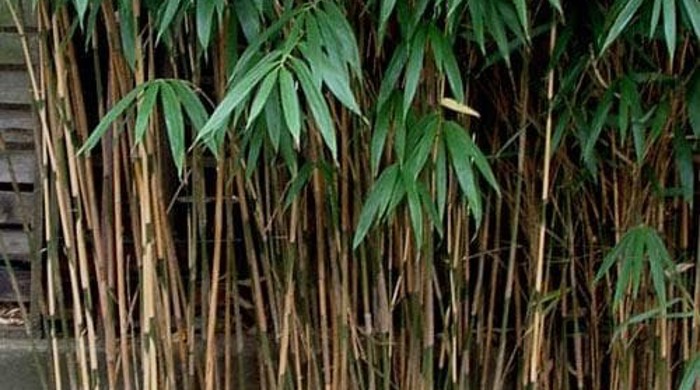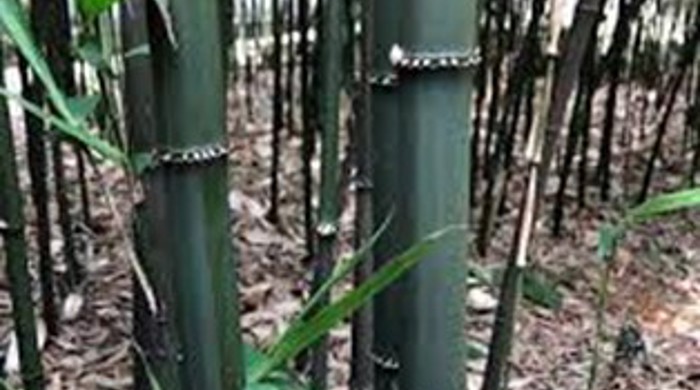Phyllostachys aurea, Phyllostachys nigra, Pleioblastus viridistriatus, Pseudosasa hindsii, Pseudosasa japonica, Chimonobambusa quadrangularis
Bamboo species
Family: Poaceae
Origin: Asia
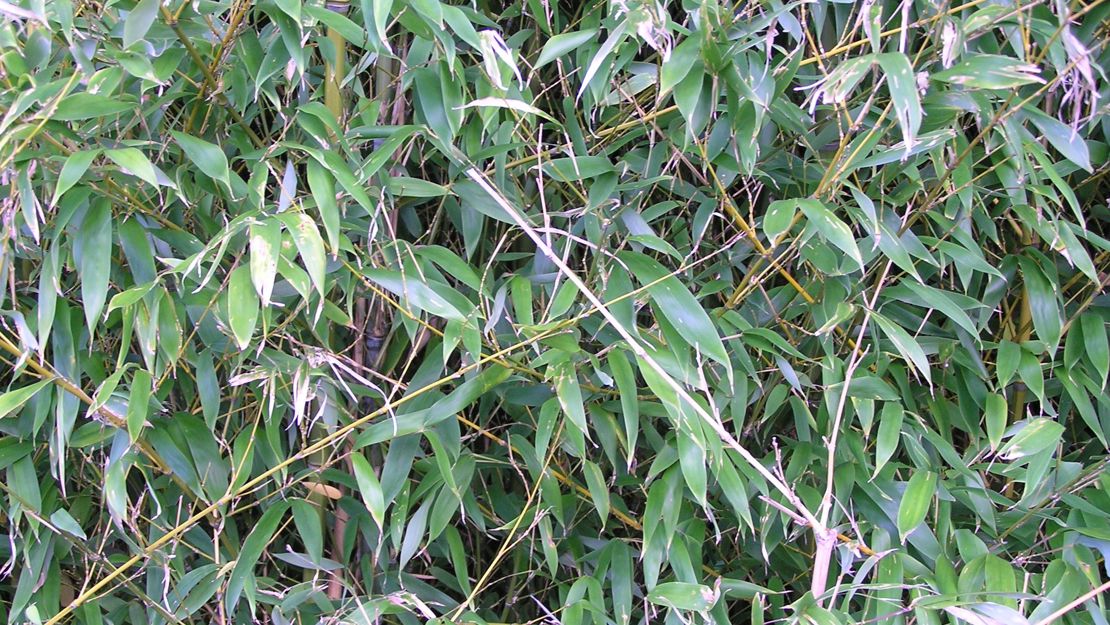
Regional Pest Management Plan (RPMP) status
- Whole region — Sustained control
- Hauraki Gulf Controlled Area Notice pest
General description
The above banned species are running, invasive types.
Bamboo is generally a tall, erect, perennial, rhizomatous grass reaching anywhere from 0.5 -20m tall that forms a dense thicket. Stems are smooth, hollow canes. Leaves are alternate.
There are two bamboo categories, runners and clumpers. The running types are typically the ones that can become a problem.
Bamboo is technically a grass. Running bamboo is similar in spreading habit to running grass (kikuyu and twitch grass) whereas clumping bamboo grows like clumping grass (tussock grass).
Note:
- Pleioblastus viridistriatus was previously named Pleioblastus auricomus.
- Pseudosasa hindsii was previously named Pleioblastus hindsii.
What you need to know
To help protect our environment, from 1 September 2021, you:
- will not be allowed to breed, distribute, release or sell the above listed bamboo species within the Auckland region.
- will not be allowed to plant the above bamboo species within the Auckland region, unless you are transferring an existing plant on your land to another location within the boundaries of the same property.
- must destroy any of the above listed bamboo species on land that you occupy if it has been planted in breach of the above rules and you are directed to do so by an authorised person.
Habitats
Forest and riparian margins, scrubland, wasteland, roadsides, gardens.
Dispersal
Vegetative spread from rhizomes. Human-mediated dispersal through dumping of garden waste.
Impact on environment
Forms dense stands, excluding other plants. Reduces plant diversity and alters faunal assemblages. Can impede access to natural areas.
Control
Site Management
Follow up treated areas 3 times per year. Encourage natural regeneration of native plants or replant treated areas where possible after 2-3 treatments to establish dense ground cover and minimise reinvasion.
Recommended approaches
Physical control
Method: Cut stems and dig out rhizomes.
Plant parts requiring disposal: Rhizomes and roots.
Disposal options: Can be chipped and used as mulch, stems can be recycled for use as stakes or remove to landfill.
Remove young shoots in Spring when they are soft. Running types only shoot in Spring.
Biocontrol
Biocontrol is currently not available for these species.
Community agrichemical control recommendations
No qualifications:
For small infestations: Cut stump and paste freshly cut base of stems with double strength glyphosate gel, cut stump and spray freshly cut base of stems with 250ml glyphosate green per 1L of water or cut stump and foliar spray regrowth with 150ml glyphosate green per 10L of water.
Certified Handler/Experienced agrichemical user:
For infestations amongst desirable broadleaf species: Cut stump and foliar spray regrowth with 150ml haloxyfop-P-methyl per 10L of water.
For infestations amongst desirable species: Cut stump and very carefully foliar spray regrowth with 150ml glyphosate green per 10L of water avoiding any spraying on desirable species foliage.
Caution: When using any herbicide or pesticide please read the label thoroughly to ensure that all instructions and safety requirements are followed.
